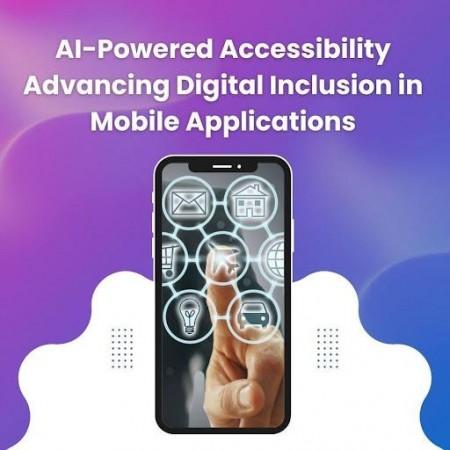
The integration of artificial intelligence (AI) in mobile applications is revolutionizing accessibility, breaking down barriers for individuals with disabilities. Kamal Gupta, an expert in AI-driven solutions, explores this transformation in his research on Android applications and their role in advancing digital inclusion. His insights highlight how machine learning is optimizing accessibility features and reshaping mobile experiences.
Bridging the Accessibility Gap with AI
Despite technological advancements, digital accessibility remains a challenge. Approximately 2.5 billion people globally require assistive technologies, yet a significant portion lacks access to digital solutions. AI-powered features in mobile applications are addressing this issue, making digital spaces more inclusive. From speech-to-text conversion to advanced screen readers, AI is enhancing usability for individuals with visual, auditory, and cognitive impairments.
Machine Learning: The Driving Force of Innovation
Machine learning is at the core of modern accessibility tools. Natural language processing (NLP) has reached an impressive 94.7% accuracy in multilingual speech recognition, improving communication for users with hearing impairments. Similarly, computer vision models now achieve a 97.8% accuracy in object detection, empowering visually impaired individuals to navigate their surroundings with greater independence. AI-driven text recognition further expands access by supporting multiple writing systems with remarkable accuracy.
Enhancing Real-Time Assistance
Advancements in AI-powered accessibility tools extend beyond recognition technologies. Real-time captioning systems now process millions of hours of audio daily, providing live subtitles with high accuracy. Similarly, AI-based navigation tools are improving wayfinding for users with mobility impairments, reducing navigation errors and increasing efficiency in real-world scenarios.
Optimizing Performance for Mobile Devices
Implementing AI-driven accessibility features on mobile platforms requires balancing performance and efficiency. Optimized machine learning models, such as TensorFlow Lite, have significantly reduced processing latency while maintaining high accuracy levels. These models consume less power, allowing accessibility applications to run efficiently on various Android devices without compromising battery life.
The Role of AI in Education and Communication
AI-powered accessibility tools have made significant strides in education and communication. Real-time text simplification algorithms improve content comprehension for students with cognitive disabilities. Sign language recognition and expression-to-speech technologies are transforming classrooms, making learning environments more inclusive. AI-driven communication tools have also bridged the gap for individuals with speech impairments, enabling seamless interactions.
Mobility Assistance: A Step Toward Independence
AI-driven mobility applications are providing unprecedented support for individuals with disabilities. Advanced navigation systems offer precise positional accuracy, helping visually impaired users move safely through indoor and outdoor environments. Public transport accessibility features are becoming more widespread, ensuring seamless travel experiences. AI-based environmental analysis further enhances safety by detecting obstacles and guiding users effectively.
Overcoming Technical Challenges
Despite the promising advancements, AI-powered accessibility faces several challenges. Multilingual support remains a complex issue, with varying accuracy rates across different languages and dialects. Developers must also address resource constraints, ensuring AI models function efficiently on diverse devices. Battery optimization and latency reduction are crucial to maintaining seamless user experiences.
Ethical Considerations and Data Privacy
With increased reliance on AI, privacy concerns must be addressed. AI-powered accessibility features must comply with data protection regulations, ensuring user information remains secure. Adhering to international accessibility standards, such as WCAG 3.0, is essential for ethical implementation. Universal design principles further support inclusive development, ensuring accessibility tools cater to a diverse user base.
In conclusion, the future of AI-powered accessibility is promising. With continuous advancements in machine learning and natural language processing, digital inclusion will reach new heights. Standardized frameworks and ethical considerations will play a pivotal role in shaping the next generation of accessible mobile applications. Kamal Gupta's research highlights the transformative potential of AI in mobile accessibility. As AI continues to evolve, it will pave the way for a more inclusive, accessible, and connected world.

















